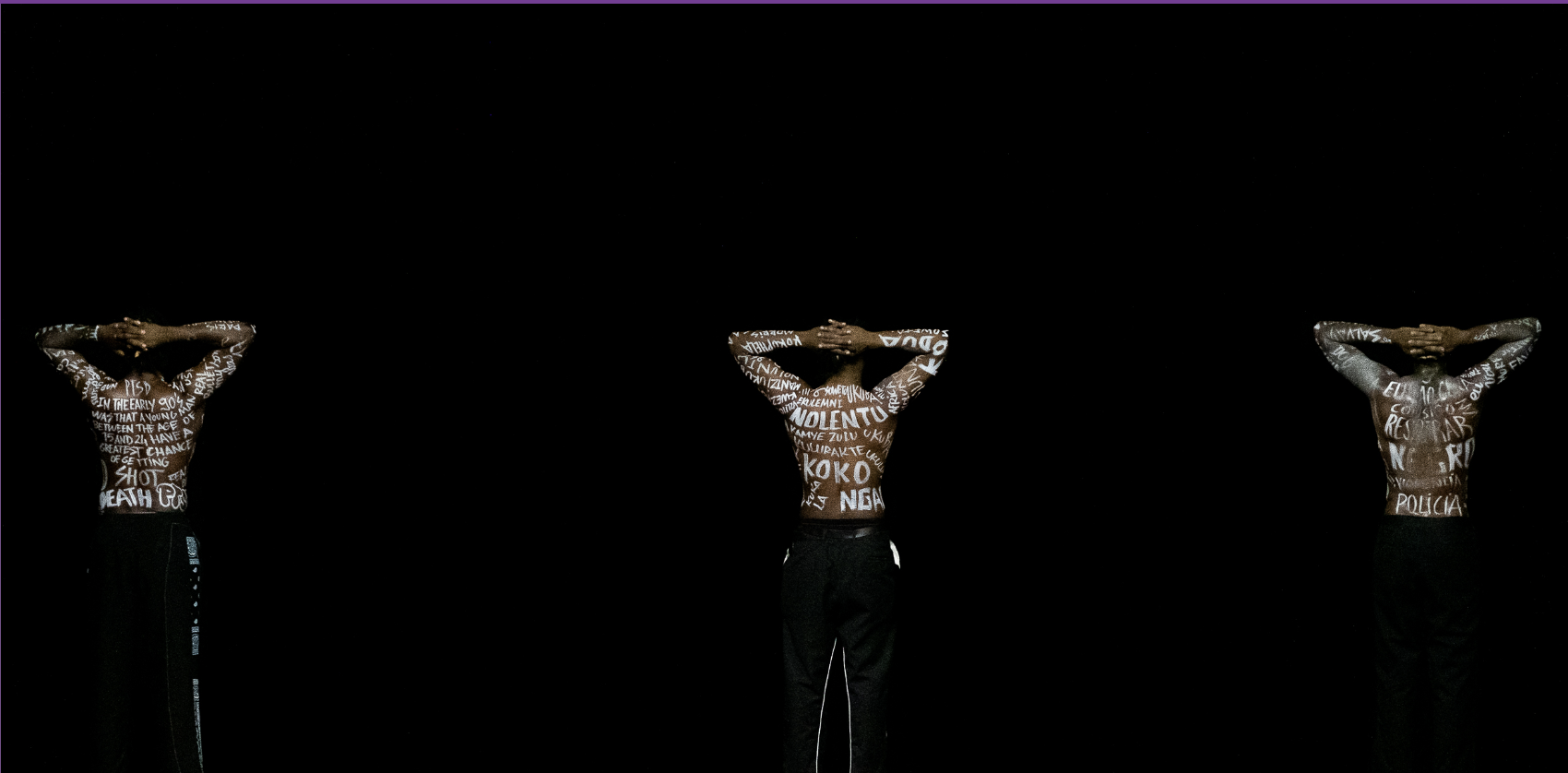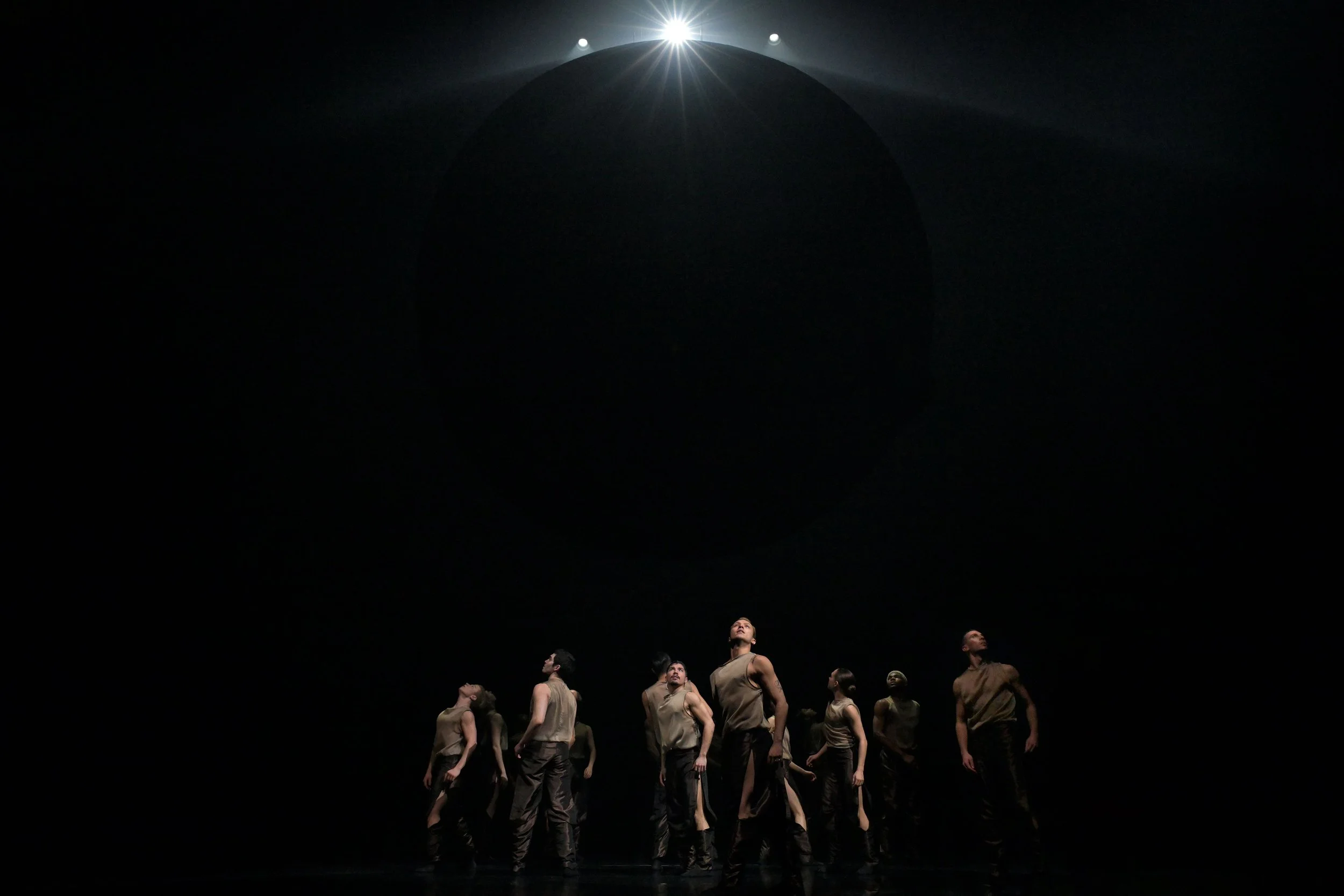Dance review: Never Twenty One builds an intense new dance language out of African diaspora
At the PuSh Festival, Smail Kanouté’s thought-provoking new work interweaves spoken testimonials, graffitied bodies, and a mix of street-dance languages
The PuSh International Performing Arts Festival and the Dance Centre present Never Twenty One at the Scotiabank Dance Centre until January 21
ALONG WITH BEING AN exciting new dance talent, France’s Smail Kanouté is a respected graphic designer whose prints draw on characters and symbols from Africa and around the world. Codes, text, and written script play a central role in both his art and his choreography.
That doesn’t just play out in the body paint that emblazons the trio of energized dancers who perform in Never Twenty One, continuing for one more night at the PuSh International Performing Arts Festival. Each has words scrawled in graffiti-like white paint across their torsos—from locales like “favelas” to references to real gun-violence incidents (“Irapuato” refers to 12 men shot dead in Guanajuato, Mexico). Kanouté’s dance creates its own, new kind of lexicon—sometimes an intricate gestural one that resembles sign language—drawing on krump, electro, pasinho, baile funk, and other street forms that he has learned from African diasporic communities around the world. The rapid, twisting footwork of the Brazil-born pasinho gives way to the frenetic arm movements of Paris electro. Like his graphic art, the choreography also draws on African sacred forms—the French-Malian artist’s thought-provoking Never Twenty One often feeling like a ceremony or rite.
Those disparate dance “dialects” merge here with a soundtrack that includes firsthand, true, painful testimonials by the people left behind when Black men have been shot in the streets from the Bronx to Rio.
Interwoven is imagery that alludes to that trauma: the opening’s flashlights searching the men’s bodies; the dancers kneeling with their arms behind their heads, or sprawling lifeless on the floor. (The title refers to the #Never21 hashtag of the Black Lives Matter movement—and the idea that young Black men risk being shot in gun violence before they reach adulthood.)
But as intense as it all sounds, Never Twenty One has a different, more meditative mood than you might expect. The trio of powerful dancers often feel like wandering spirits, rising above the darkness through artistic expression.
And so Never Twenty One is complex in its plurality, rhythms moving from the calm and loose to the traumatic and ecstatic, sometimes within seconds. Amid those changing moods one throughline emerges: a brotherhood that spans Soweto to Rocinha to Bamako.














